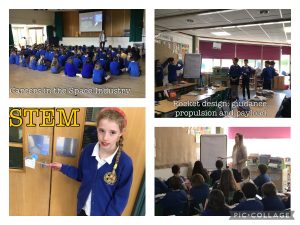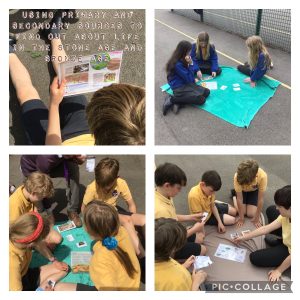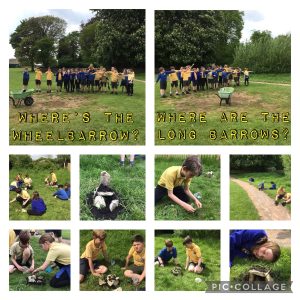STEM Space Industry Visitor
 On Monday year 5 and 6 had a visitor called Camilla. She’s a scientist and space expert. She told us about all the jobs you can do if you want to be in the space industry. To do that you need to study science or maths and be prepared to fail – a lot!
On Monday year 5 and 6 had a visitor called Camilla. She’s a scientist and space expert. She told us about all the jobs you can do if you want to be in the space industry. To do that you need to study science or maths and be prepared to fail – a lot!
We also designed and made balloon rockets. You had to put them on a fishing wire and you had to blow up a balloon with a pump and not our lungs. I think that made it go farther (propulsion), and there was a straw that you would put on the fishing wire (guidance). It had to carry something (a payload), which for us was paperclips. We had to get it to carry as many paperclips as possible. You would let go of the balloon and if you did it right you would make it fire across the fishing line; if you didn’t it wouldn’t go even an inch. Evie and I had the idea to put a little bit on the bottom to carry the payload. It was aerodynamic and also helped the rocket to balance.
We got picked to represent our class in the afternoon with the other two classes. Ours went along the whole of the fishing line and the whole of year 5 and 6 were watching!
I felt really good!
Written by Rafe and Evie
History – Stone Age / Bronze Age

Last week we looked at primary and secondary sources. The primary sources were bronze tools, holes in the ground, pieces of pottery and different types of stone. The secondary sources were pictures of what these things would have looked like, drawn by someone recently.
Bronze Age life was very different to our lives in 2023. Way harder! They lived in round houses made of wood, straw, thatch or stone. They made their own clothes from animal skin and yarn made from flax or sheep’s wool. They used tools to hunt animals and also foraged for plants and berries. They were hunter gatherers.
By Jamie
Learning about long barrows – Mini Long Barrow Land
 In our stone age and bronze age history topic, we learned about long barrows. These are mounds of stone and earth that were once built as big tombs or burial chambers for the bodies or ashes of important people.
In our stone age and bronze age history topic, we learned about long barrows. These are mounds of stone and earth that were once built as big tombs or burial chambers for the bodies or ashes of important people.
On our wet, muddy walk we saw a long barrow where the Tinglestone is. The Tinglestone must have been put there as a sort of gravestone. There used to be a tomb at the Longstone but the massive stones were moved into someone’s back garden around 200 years ago.
We made our own tiny long barrows on the field out of stones and soil. It was tricky getting the stones to stand up but it was nice being outside – I love nature.
by Violet and Mr Weinberger
